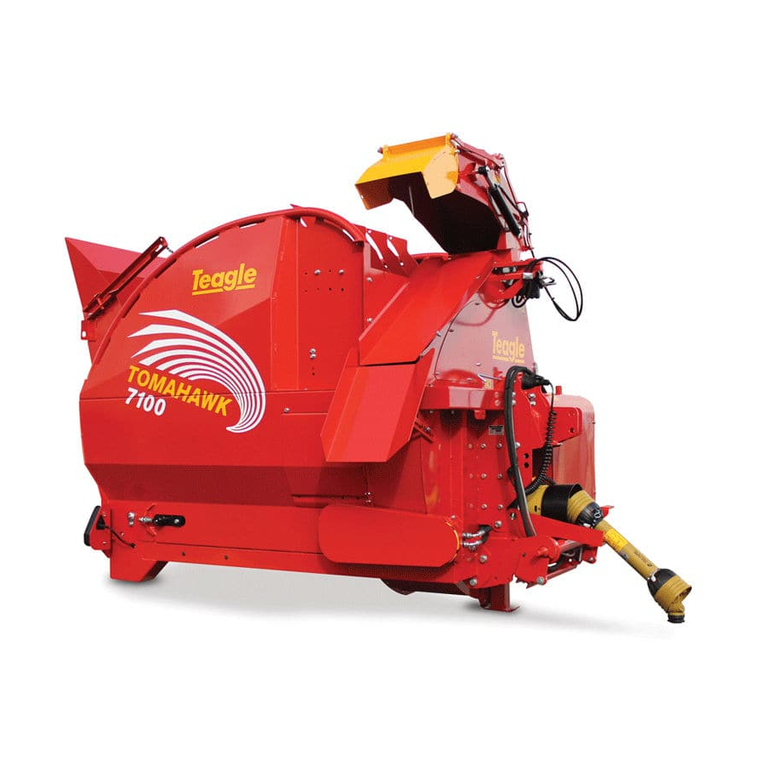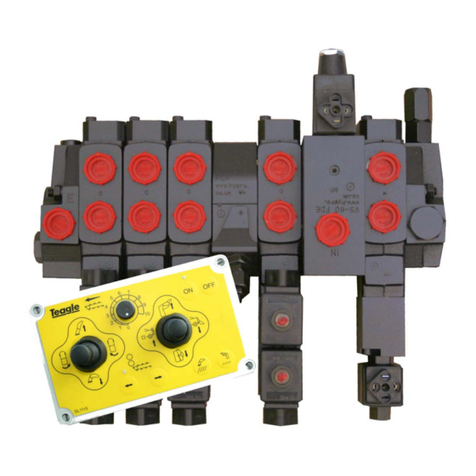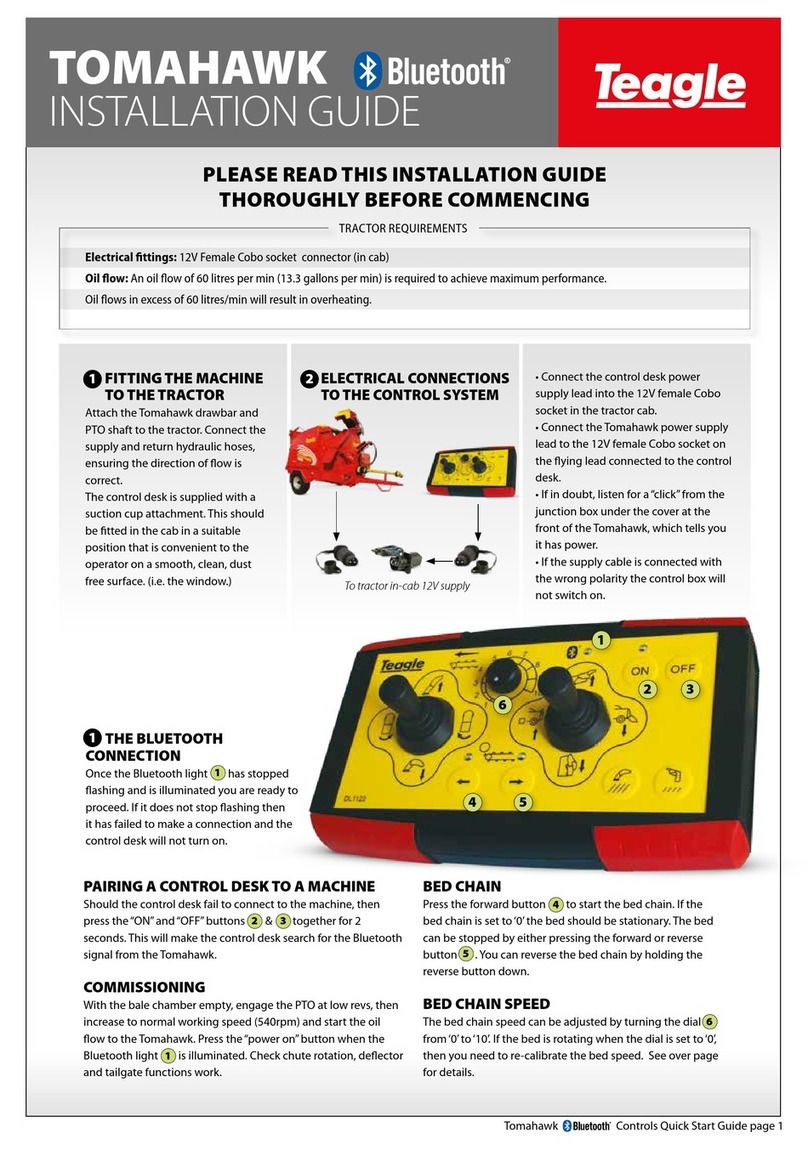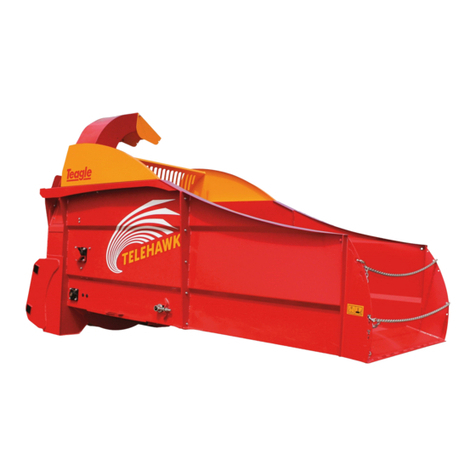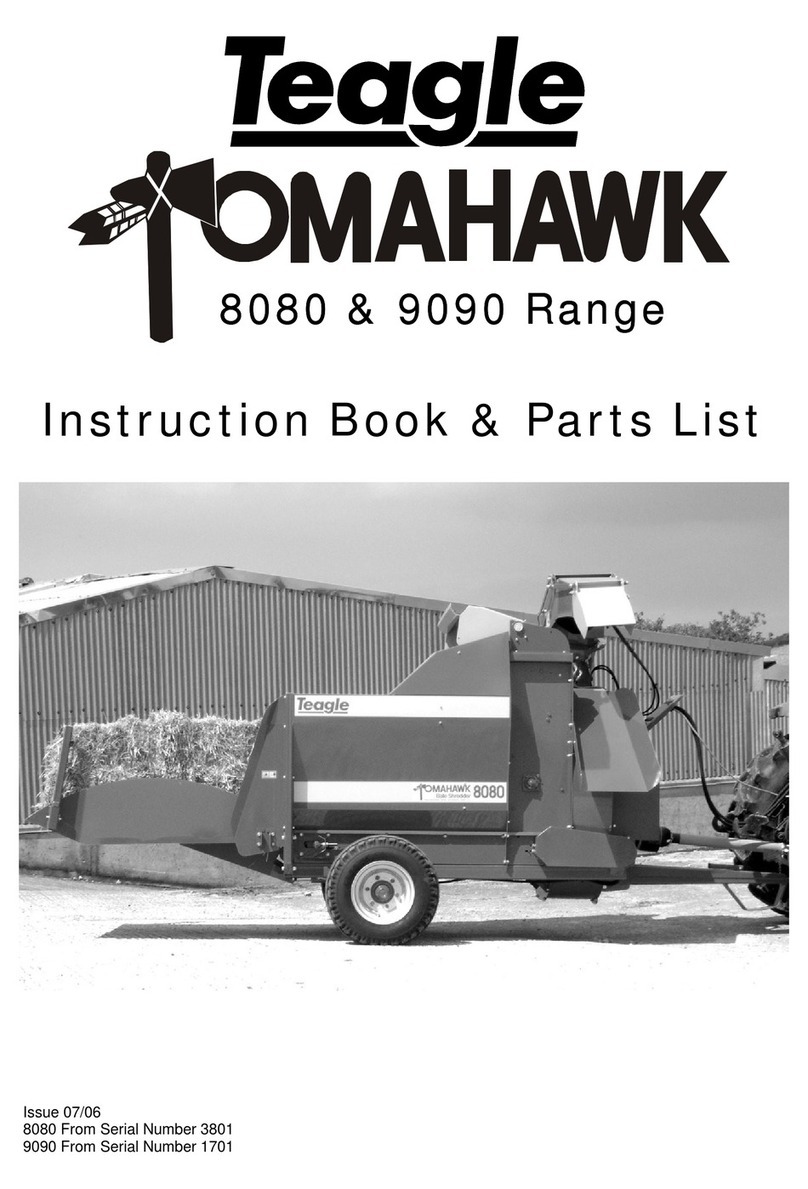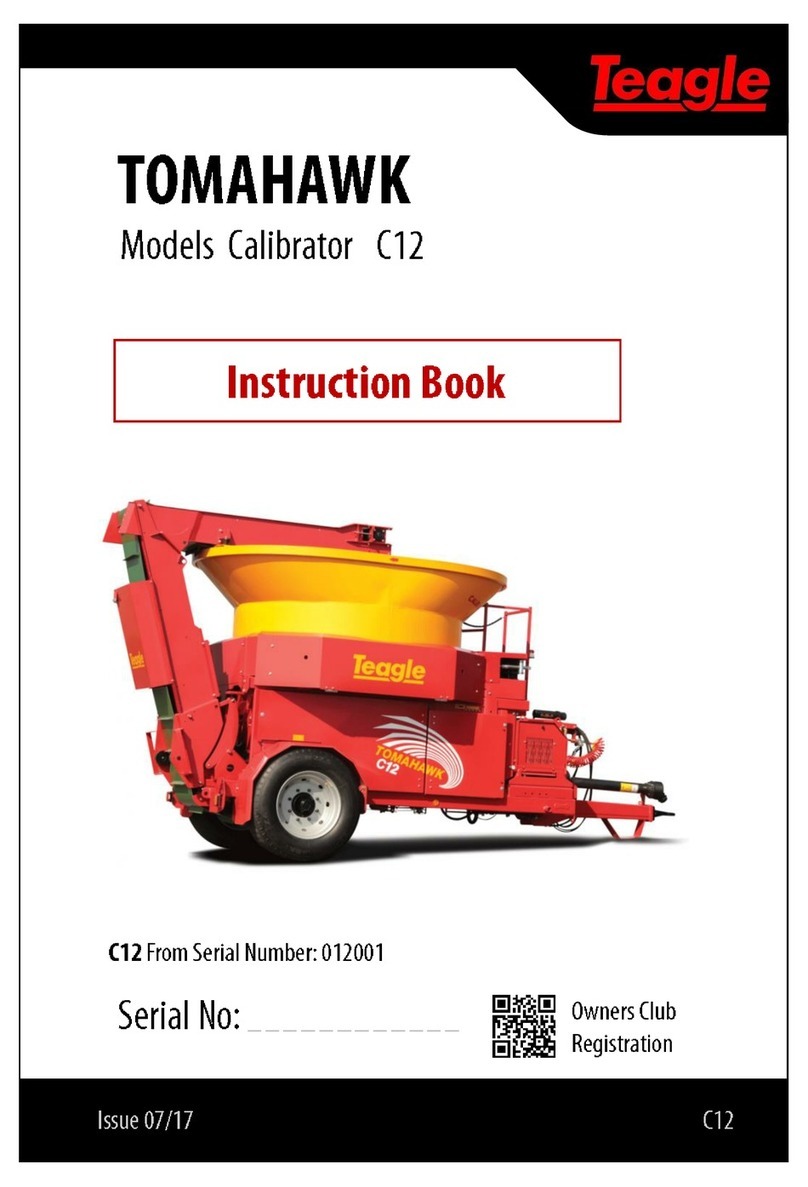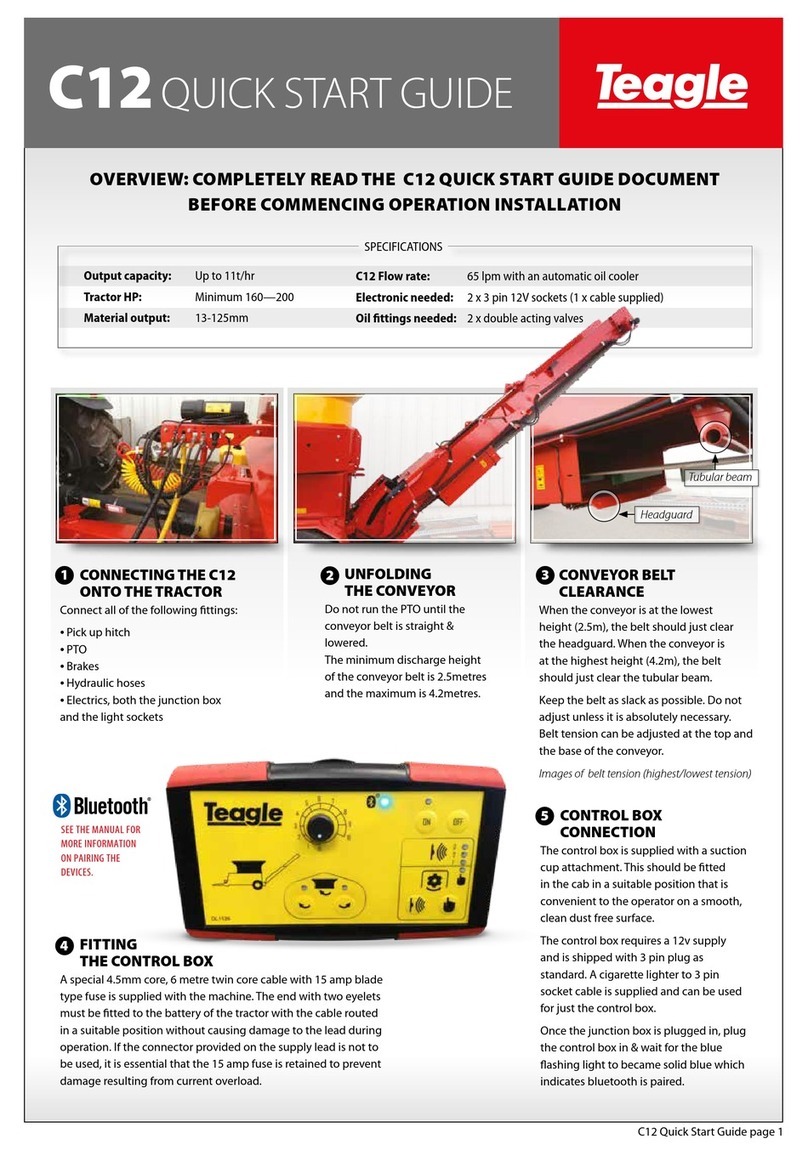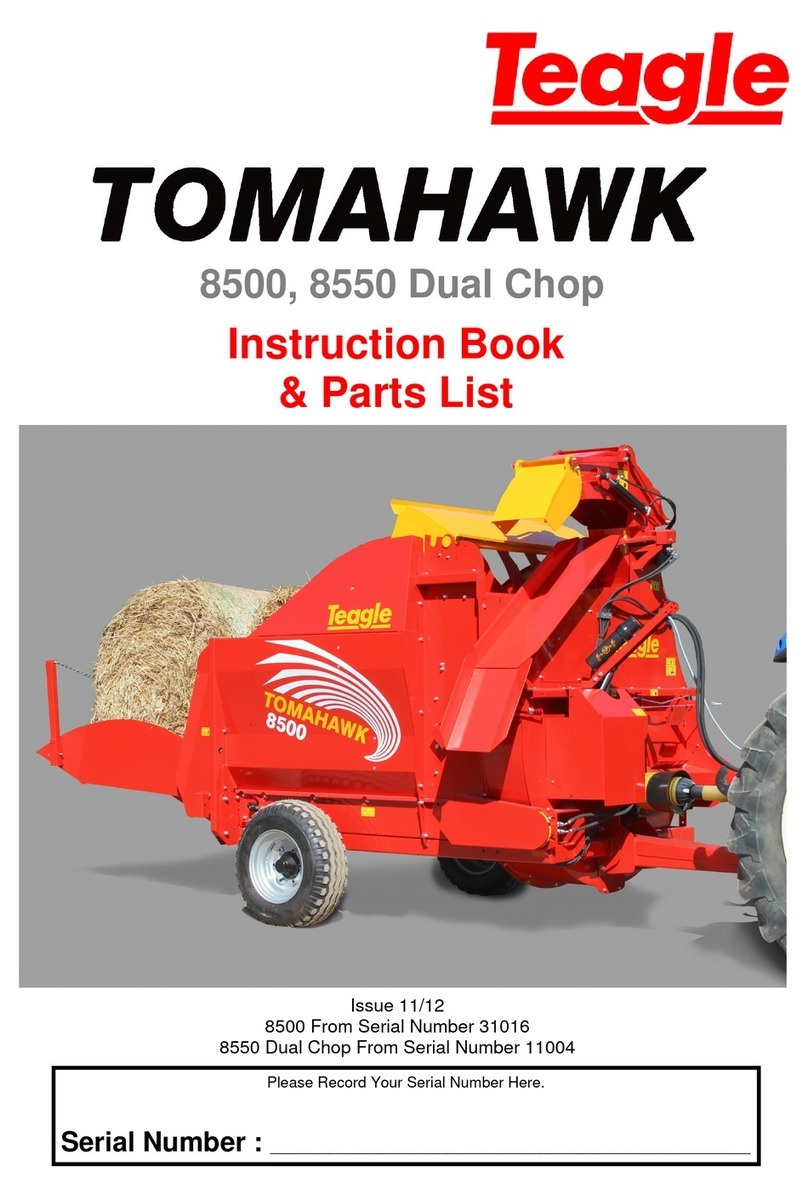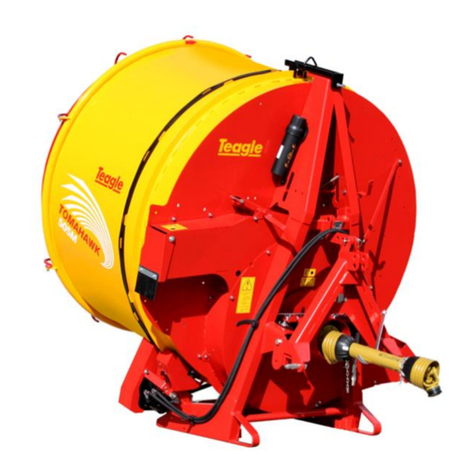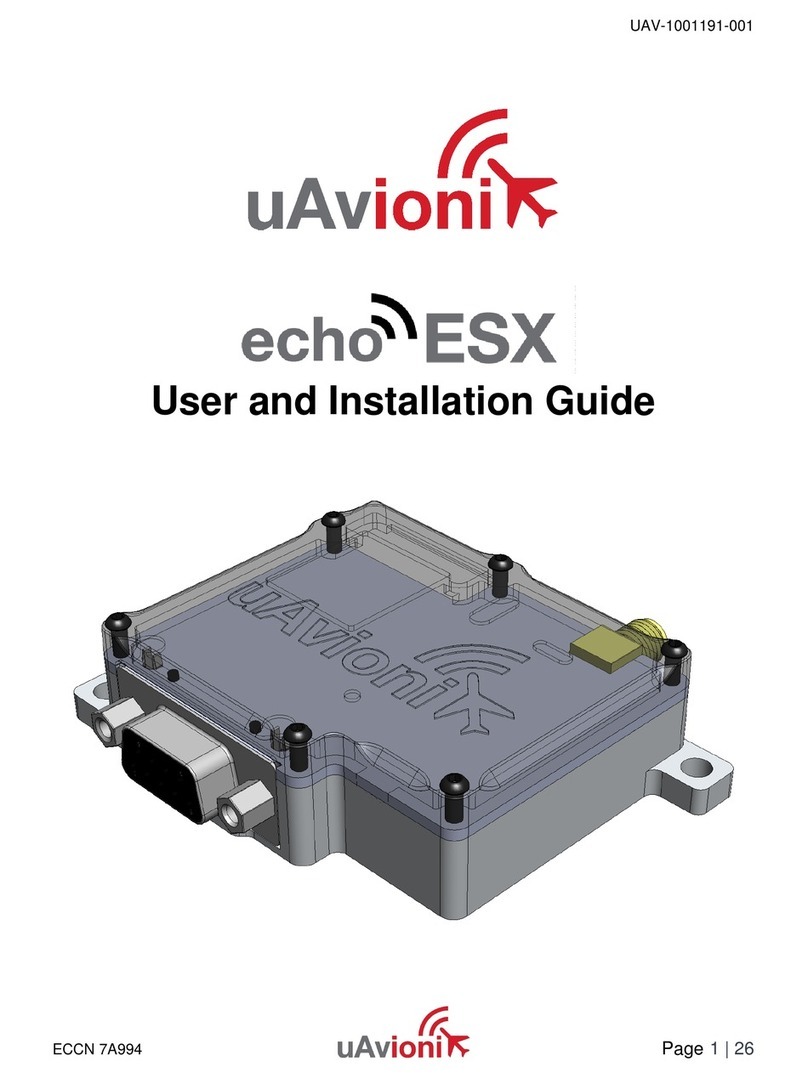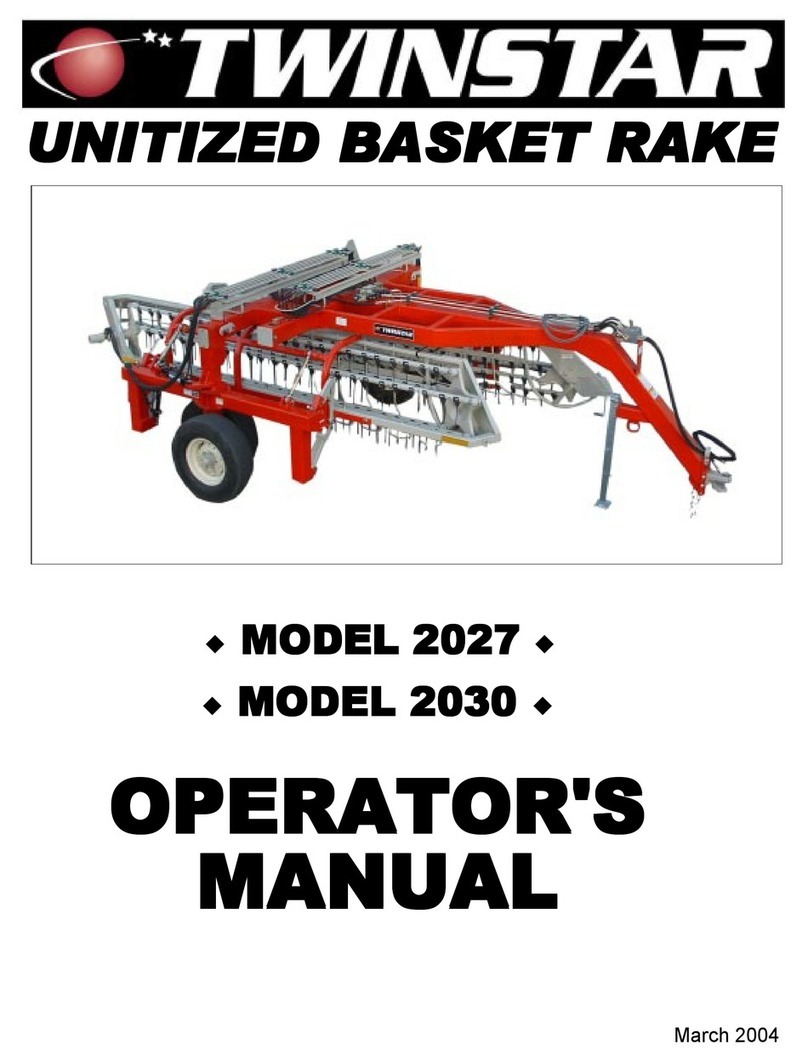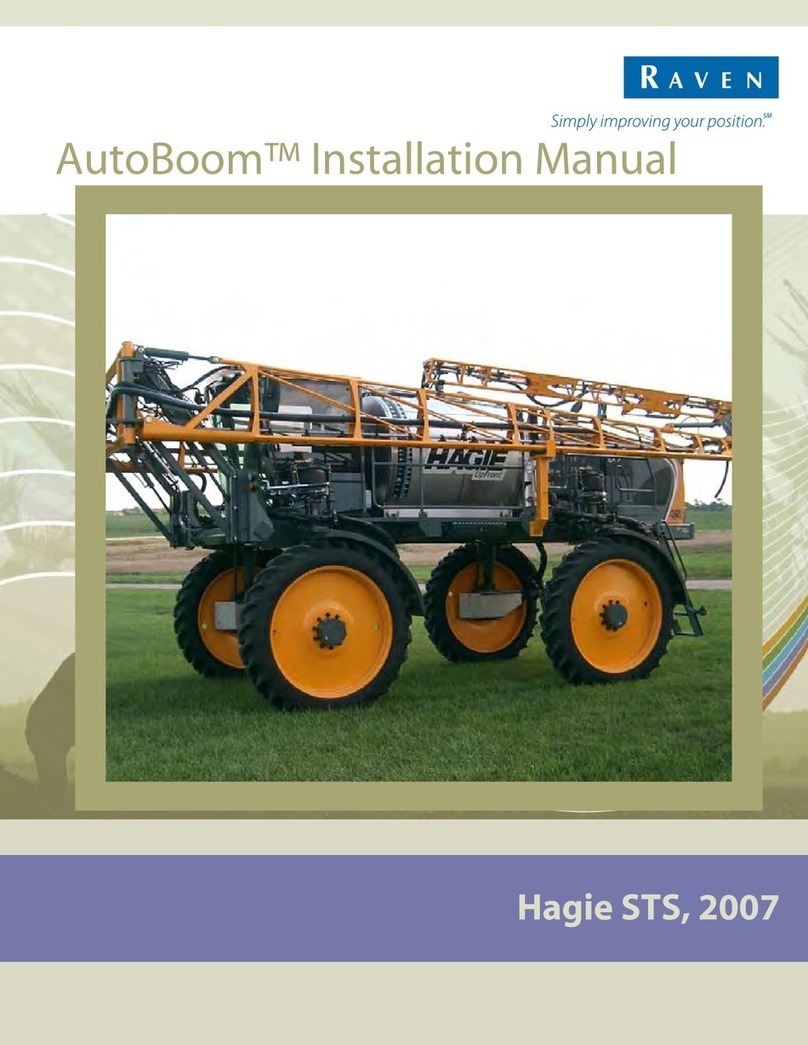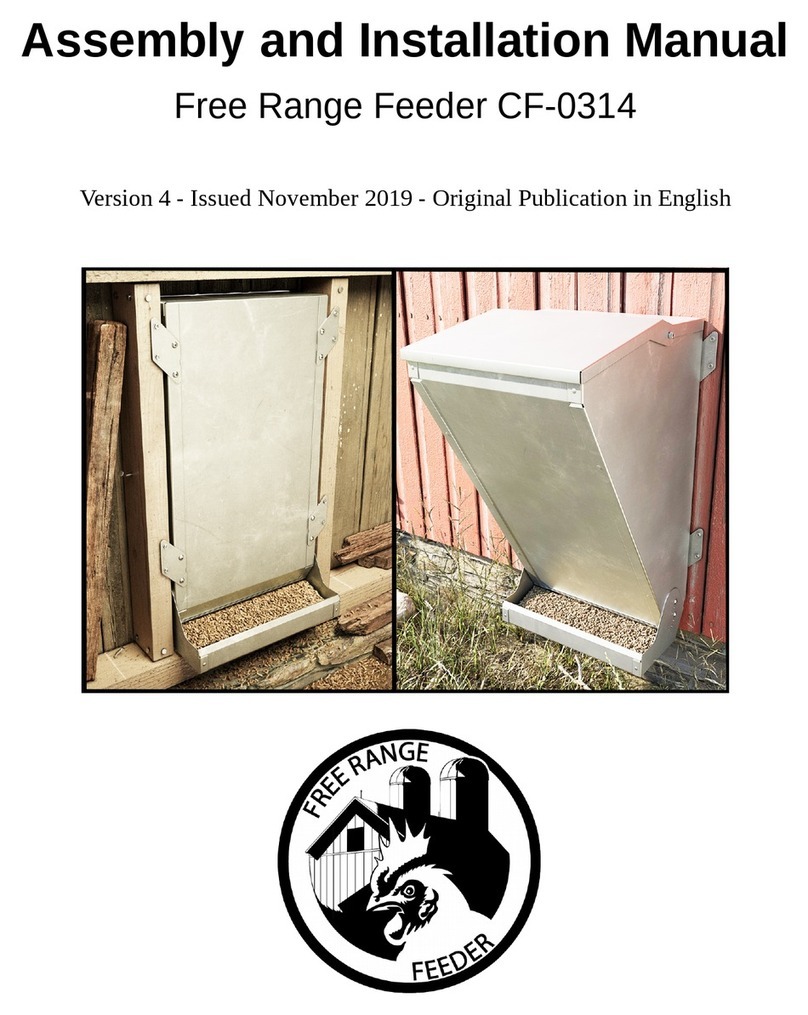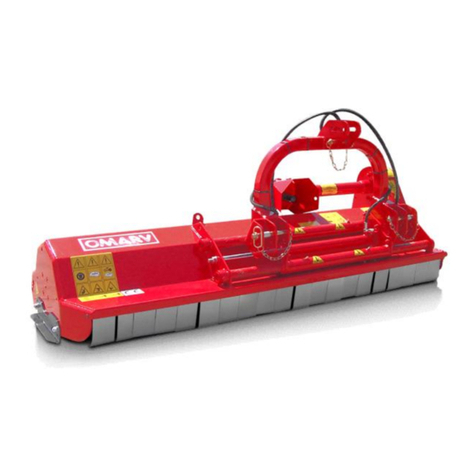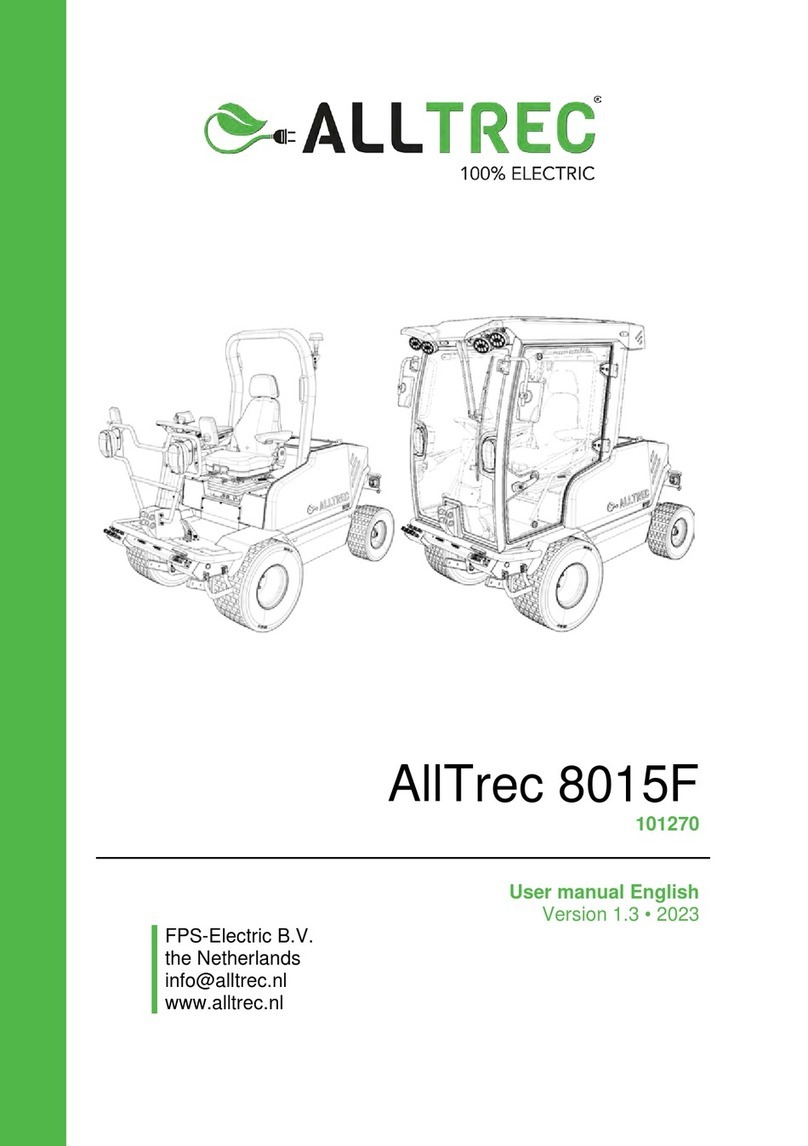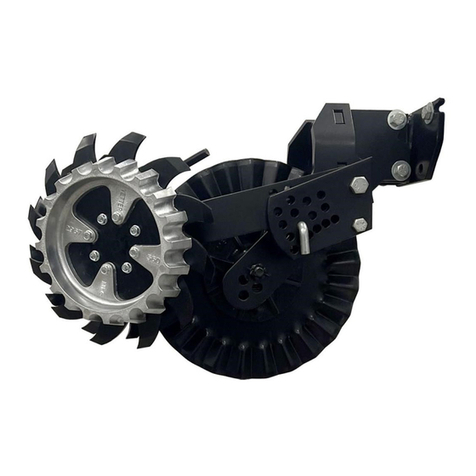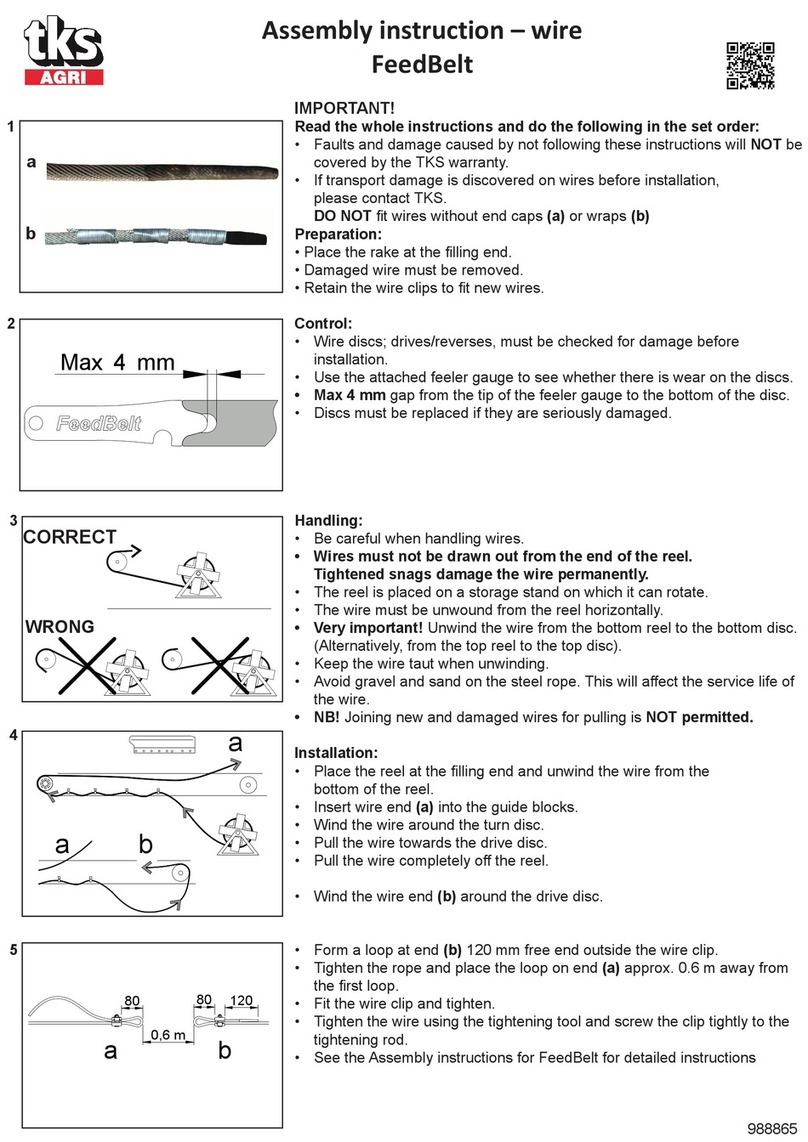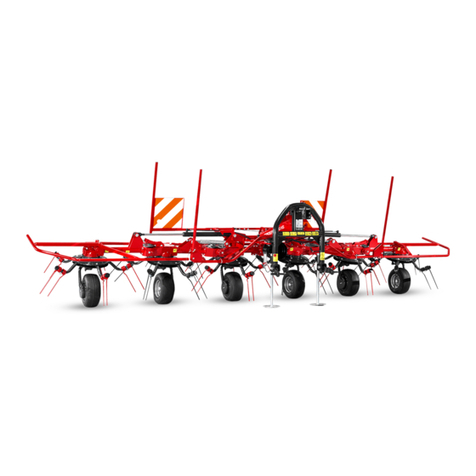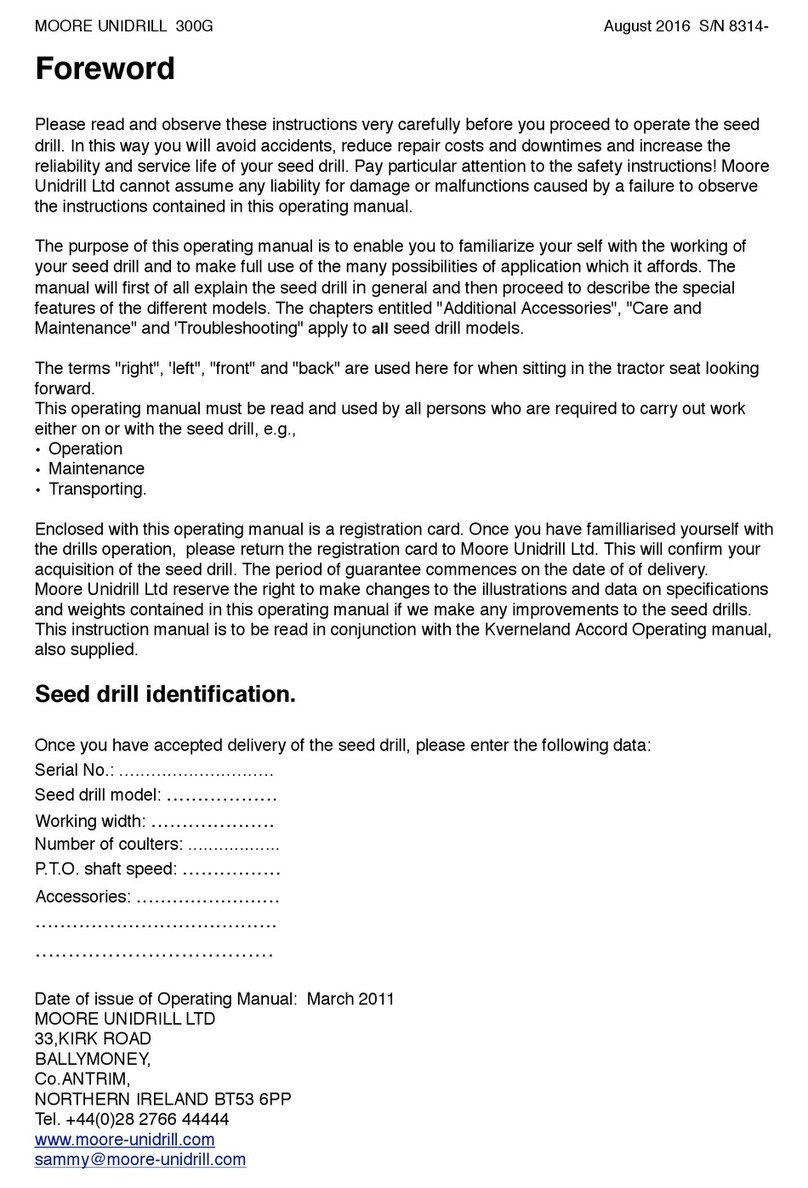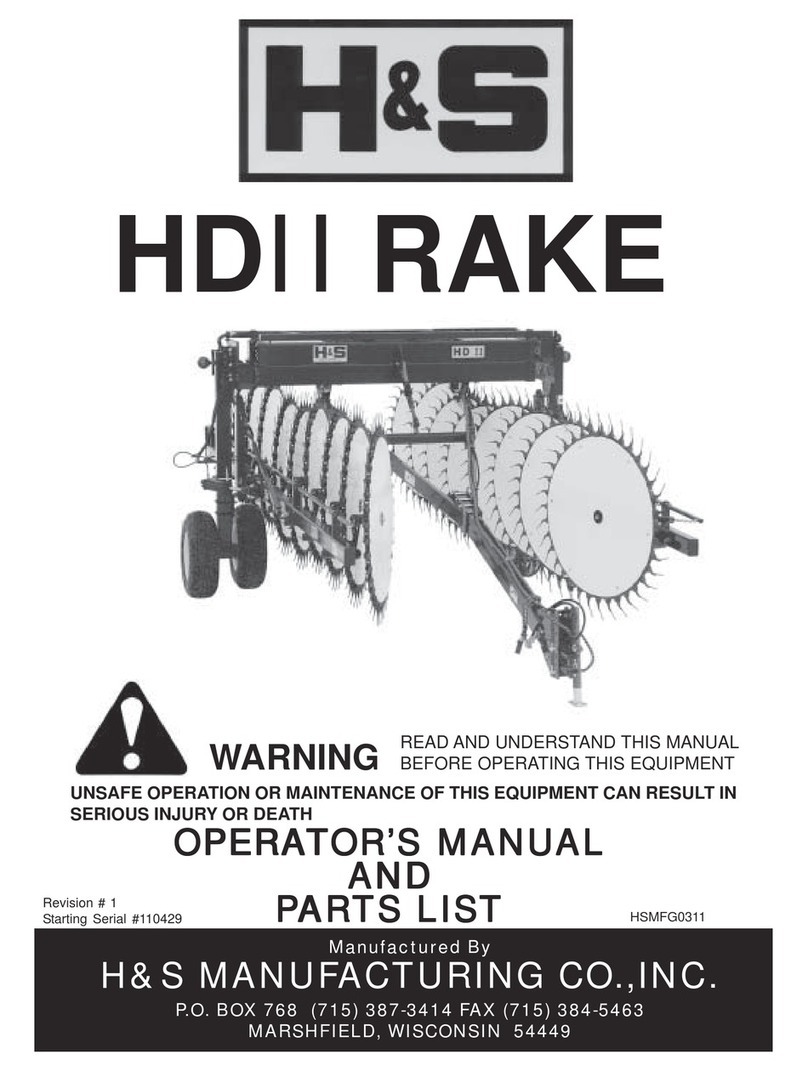
8. PREPARATION OF THE TRACTOR
For good visibility down both sides of the machine when
working and reversing, the tractor should be fitted with
mirrors.
The PTO power required to drive the Tomahawk is
typically about 60KW (80HP) for the 1005 and 67.5 KW
(90HP) for the 1010. However, the suitability of any
particular tractor will depend upon, a) the distance over
which the straw is to be spread, b) the type of bale to be
spread, and c) whether the machine is to be used to
transport bales along the road.
The machine is designed to use the standard 540 rpm
PTO shaft.
The hydraulic valve block requires a double acting spool
valve or a single acting valve with an unrestricted return.
Whichever is used, the hydraulic supply must be
independent of the 3-point linkage.
The control box mounting bracket should be fitted inside
the cab so that the controls are conveniently situated for
the operator. It should be remembered that structural
members of the cab must not be drilled or welded.
The electric control supply cable should be connected
the tractor’s auxiliary 3 pin socket. Should a socket not
be available then the control box must be wired directly
to the battery. Remove the connector plug to reveal the
brown and blue wires, brown is positive, blue is
negative. Wire directly to the battery with a suitable lead
and insulated connectors.
If the supply cable is connected to the battery with
the wrong polarity the control desk will not power
up.
If the fuse should blow this will be indicated by the red
LED illuminating.
Under no circumstances remove the fuse holder or
use fuses with a higher rating than 7.5amps.
Warranty will be invalidated
9. FITTING THE MACHINE ONTO THE TRACTOR
Check that the lower links are at a height such that
they do not foul the PTO shaft when the tractor is
turning. If they are not used regularly, it is
recommended that they be removed. Hitch the machine
to the tractor via the drawbar without the PTO shaft
fitted. Release the parking brake on the left hand side of
the machine by pulling forwards and then allow to swing
rearwards. Park the tractor and machine securely on
level ground and remove the key.
It is essential to get the relationship between the
tractor PTO shaft and the gearbox input shaft
correct to give a satisfactory PTO shaft life. The correct
geometry exists when the machine is horizontal.
If the machine is shredding whilst turning on a
regular basis it is recommended that a PTO shaft
with a wide angle, constant velocity joint be fitted. A
shaft of this type can be obtained from the manufacturer.
The PTO shaft will require cutting to length to suit the
tractor to remove the risk of bottoming resulting in
catastrophic failure of the machine gearbox.
Proceed as follows:
1.) Measure the distance between the annular groove
on the tractor output shaft to the annular groove on the
machine input shaft.
2.) Measure approximately the distance between the
retaining balls of each sliding yoke at either end of the
PTO shaft with it fully collapsed.
3.) Subtract the second measurement from the first and
now subtract this value from 150mm (6”). The answer is
the amount to be removed from each half of the PTO
shaft.
4.) Separate the 2 halves of the PTO shaft and remove
the necessary amount from each half guard and each
half tube. Remove the guards to facilitate cutting if
required.
5.) Fit the slip clutch side of the PTO shaft to the
machine and the other end to the tractor, the PTO shaft
should now have the required 150mm (6”) travel before
bottoming. This should be indicated by the length of
black PTO guard showing.
6.) Gradually turn the tractor until maximum turning lock
is achieved checking that the PTO shaft does not come
to within 100 mm (4 inches) of bottoming.
7.) Drive the tractor and machine over any significant
undulating ground conditions checking that the PTO
shaft does not come to within 100 mm (4 inches) of
bottoming.
Connect the hydraulic hoses into the spool valve of the
tractor. It is important that the supply hose to the valve
is connected to the pressure port of the tractor, this hose
is marked with red tape around the hose. Attach the
brake hose to the tractor brake coupling
Once the control box has been positioned, route the
machine cable into the cab making sure it is kept away
from the rear wheel and any pinch points between the
PTO shaft and link arms. Where possible, route into
the cab through cable entry points on the tractor,
allowing the rear window to be kept closed during use.
Plug the cable connector into the socket on the box
and lock by the clamp provided.
Ensure the functions of the control box are
completely understood before proceeding to use
the machine. In particular the bed chain is actuated in
the forward direction by pushing the forward direction
button and stopped by pressing the button again.
Reverse of the bed chain can only be actuated by
holding the reverse button.
10. OPERATING INSTRUCTIONS - LOADING
10.1 General
The strings or net should be removed from the
bale as it is being loaded into the machine. The
Tomahawk will shred some string but some will
tend to wrap around the crossbeaters. Putting twine or
netwrap through the machine is not recommended as it
will be eventually spread on the land and polluting
subsequent crops.
When removing string or netwrap from bales never
climb into the bale chamber or onto the tailgate
behind a bale unless the PTO has been disengaged, the
engine has been stopped, the key removed and the
machine come to rest.
5




















